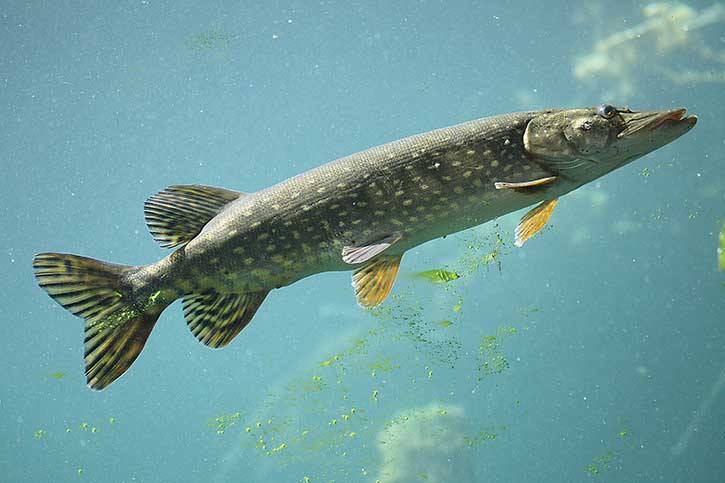The initiative to keep regional waters safe from a predator could help save the lives of many local sport fish.
While the risk of a Northern Pike fish invasion in the Columbia River is substantially low, Canadian Columbia River Inter-tribal Fisheries Commission (CCRIFC) aquatic biologist Will Warnock believes the fish that are native to the Kootenay River watershed could be faced with serious problems if the species begins to spawn in Canada.
“Northern Pike, we know have been present in the Koocanusa Reservoir on the American side, so there’s nothing preventing them from moving up into Canada,” explained Warnock, while explaining that a fisherman recently caught a Northern Pike in St. Mary’s River, “then moving into any areas that are accessible throughout the Kootenay River system — the same area of river flows into the Kootenay River just by Cranbrook so it’s not surprising that one would move in here.”
Northern Pike are a species of fish that are most often coloured with an olive green body and shading from yellow to white along its belly. Younger pike are frequently seen with yellow stripes along a green body, which later changes into light spots and the body turns from green to olive green.
The Northern Pike is known as a relatively aggressive species that develops a tendency toward becoming cannibals. This happens around five weeks when food is scarce. Occasionally, Northern Pike will turn against smaller counterparts of their own breed to eat regularly.
“They could potentially be a large problem for native fish if they are able to establish in the Kootenay watershed,” added Mr. Warnock. “They can impact native fish species, native amphibians, native invertebrates by eating them.”
It remains unclear where exactly the Northern Pike are coming from or if they’re established (spawning naturally) anywhere in Canada.
“What typically happens with fish when they get introduced to an area is they’re not very abundant and you’ll get reports every now and then of people catching one,” he said. “But as soon as they get a foothold, you’ll start seeing a lot more of them, so we don’t know if they’ve established yet and (if) we’re going to be seeing a lot more of them or not, but there’s a large potential that they could establish and multiply and spread their way through the Kootenay system.”
Mr. Warnock explained if the Northern Pike travelled north, the species would be trapped in the Kootenay River system unless an angler moved one into another body of water. He noted slow moving, warm water tends to attract Northern Pike.
“There’s no way they could get into the Moyie or over into the Upper Columbia because the drainages aren’t connected,” he added. “It would be the Kootenay system that we would be worried about, and likely the main stem of the river — lakes that are attached to the Kootenay River at certain times of the year — that we would be worried about. Places like Wasa Lake, and the sloughs around Wasa.”
Warnock urges anglers to familiarize themselves with the appearance of Northern Pike and deliver the whole catch (or the fish head) to the Ministry of Forests, Lands and Natural Resources or to the Conservation Office.
“They’re quite distinctive,” he concluded. “They’ve got this sort of flat. duck bill-like snout on them and their dorsal fin is far back on the body. They’ve got colouration like nothing else you would see in the area so people should get to know what they look like first, but if they catch one, they should take it to their local provincial ministry office — there’s one in Invermere, Cranbrook and Fernie. Take it to either the Conservation Officer Service or Forest Lands and Natural Resources.”
